In 1828 already, Count István Széchenyi and Baron Miklós Wesselényi "cycled" on the banks of the Danube in Pest trying the two-wheeled, but still pedal-free draisines, called drezina in Hungarian. The name refers to the inventor, the German Baron Friedrich Christian Ludwig Drais von Sauerbronn, who built his "running machine" in 1817. In the absence of a pedal, those sitting in the saddle used their feet to push themselves.
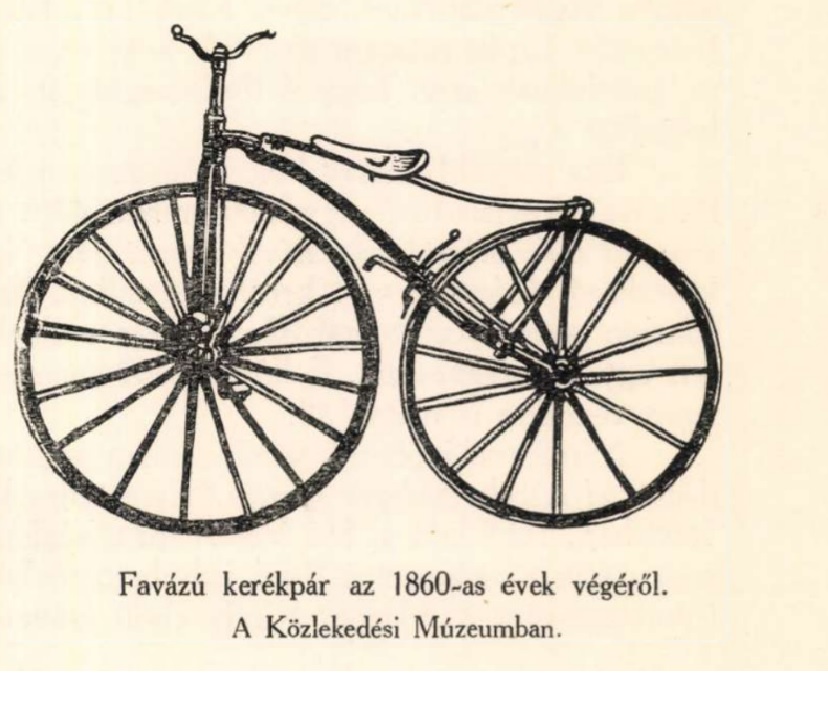
The first bicycles did not have pedals, they had to be pushed by foot, so they were also called running machines and draisines after their inventor (Source: Dr László Siklóssy's book: A Magyar sport ezer éve [A Thousand Years of Hungarian Sport], Budapest 1928)
The first pedal-powered bicycles, velocipedes, appeared in Pest-Buda in the late 1860s. The Kertész és Eisert company on Dorottya Street, which sold sporting goods, drew the attention of readers in a newspaper ad in 1869 that it "keeps in stock the latest and best-structured velocipedes, for which it is happy to provide a price list and instructions for use".
Tódor Kertész, one of the distribution company owners, rode a bicycle himself, and he caused a great sensation with his exercise on the banks of the Danube. He also shared his knowledge and experiences with the gentlemen and ladies of Pest-Buda: next to today's Vörösmarty Square, in the courtyard of the German theatre that burned down in 1847, he opened a “bicycle” school and practice school, which was soon followed by others, such as the Attila Bicycle School on József Boulevard.
The velocipede, which was popular abroad, did not attract crowds in Hungary in the end; according to records, in 1882, there were only a few velocipedists in Budapest, who were often ridiculed, depicted in cartoons by contemporary newspapers, while also reporting on their performance and competition results. In 1884, Iván Szmertich completed the distance between Budapest and Vienna in 16 hours and 22 minutes and then continued his journey to Paris and London, setting a distance world record.
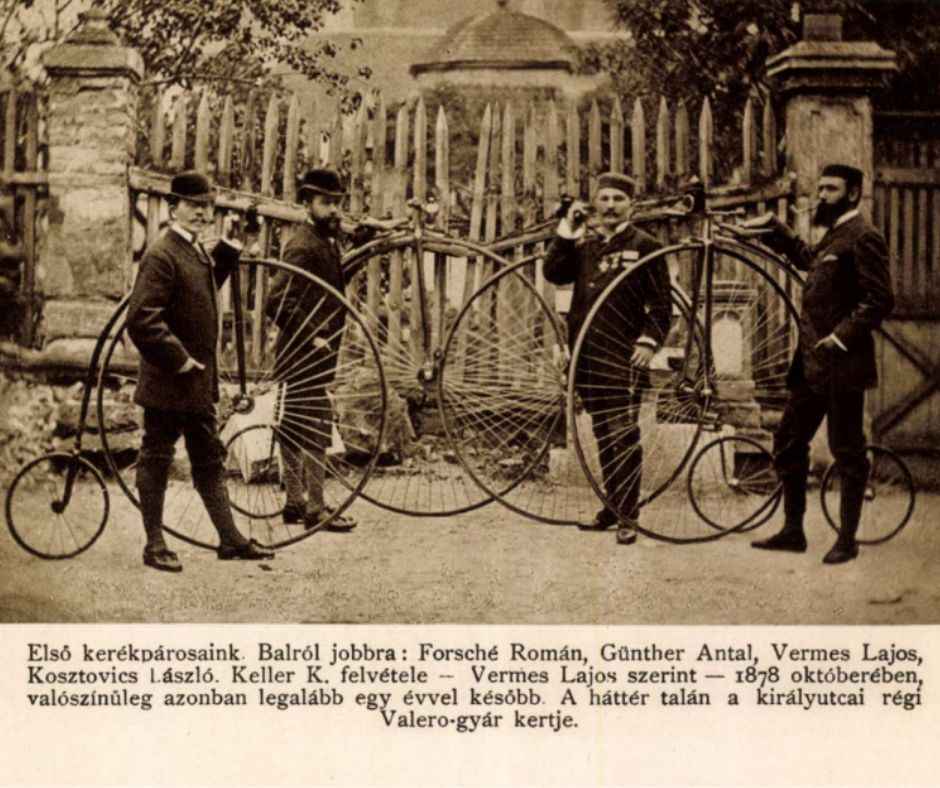
The first known cyclists in the capital (Source: Dr. László Siklóssy's book: A Magyar sport ezer éve [A Thousand Years of Hungarian Sport], Budapest 1928)
Gyula Phillipovich was also a long-distance record holder; he cycled to Paris in six days. Ferenc Udvary and Jenő Udvary cycled to Turin, to Lajos Kossuth in 1889. (The Udvardys went to Turin not from Budapest, but Körmend. - Ed.) Kossuth welcomed the velocipedists, and according to contemporary reports, he said to them: “Their sport is beautiful and it trains body and soul. Protect, my dear boys, your strength, because we Hungarians are few and must be strong!”
One of the outstanding figures of contemporary cycling was László Kosztovits. He organised the first social cycling trip, at Easter 1881, the group cícled from Városliget to Gödöllő, then returned to the capital the next day in a snowstorm. To commemorate the first cycling trip, veteran cyclists repeat the tour annually on contemporary vehicles and in contemporary clothing.
It was also László Kosztovits who established the first cycling club in 1881, called the Budapesti Vasparipa Egyesület Előre (Budapest Iron Horse Association Forward). However, this only operated for a short time because the association’s room – including equipment and bicycles – burned down.
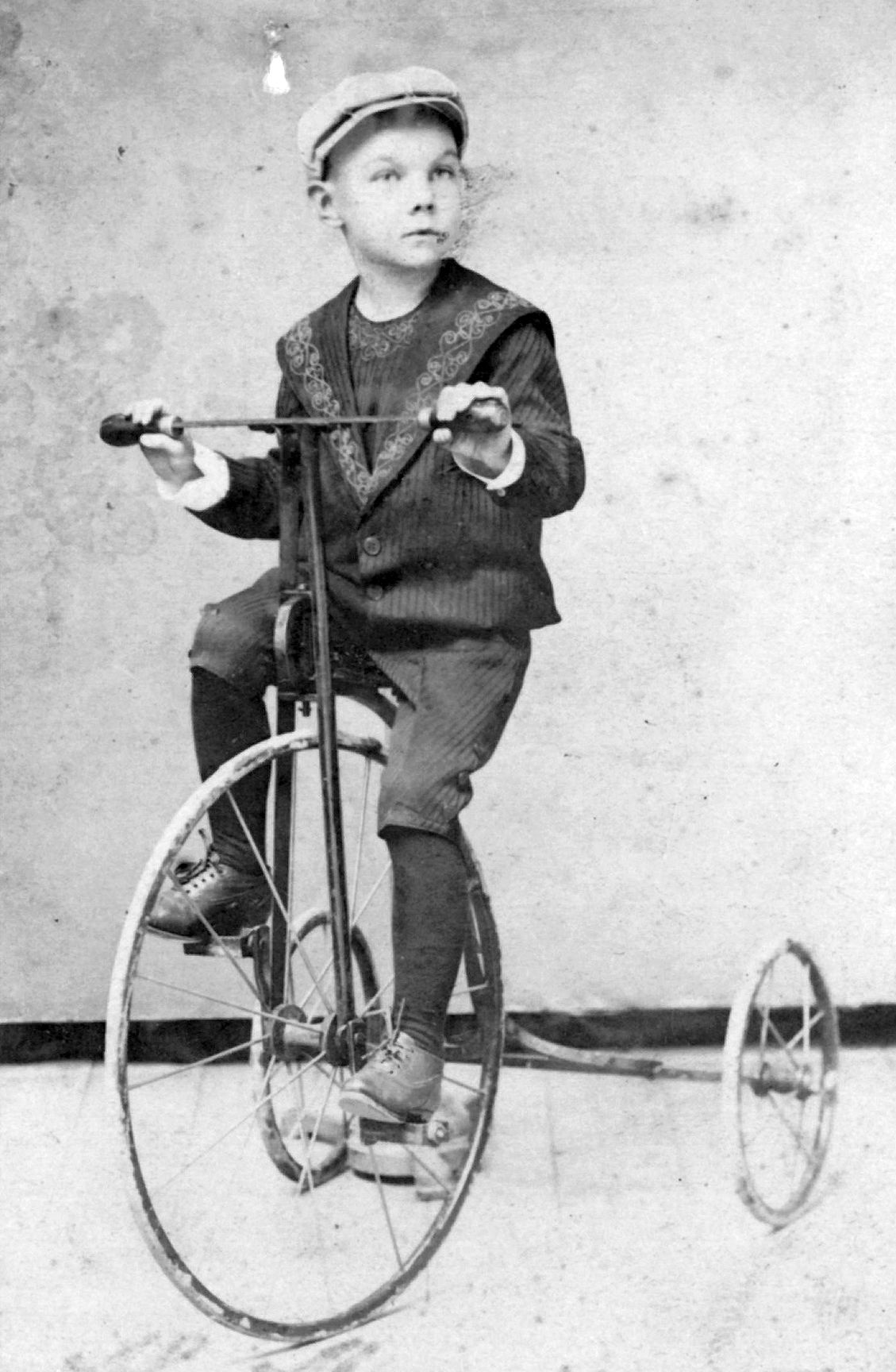
Tricycles were also made for children in the 1900s (Photo: Fortepan/No.: 31723)
The Budapest Bicycle Association was formed from its members, the statutes of which were confirmed by the Ministry of the Interior on 13 September 1882. A year later, in 1883, the club already had 49 members. An official association cycling was first held on 8 June 1883, with the group pedalling to Szentendre. On 18 August, the first Hungarian bicycle race was held.
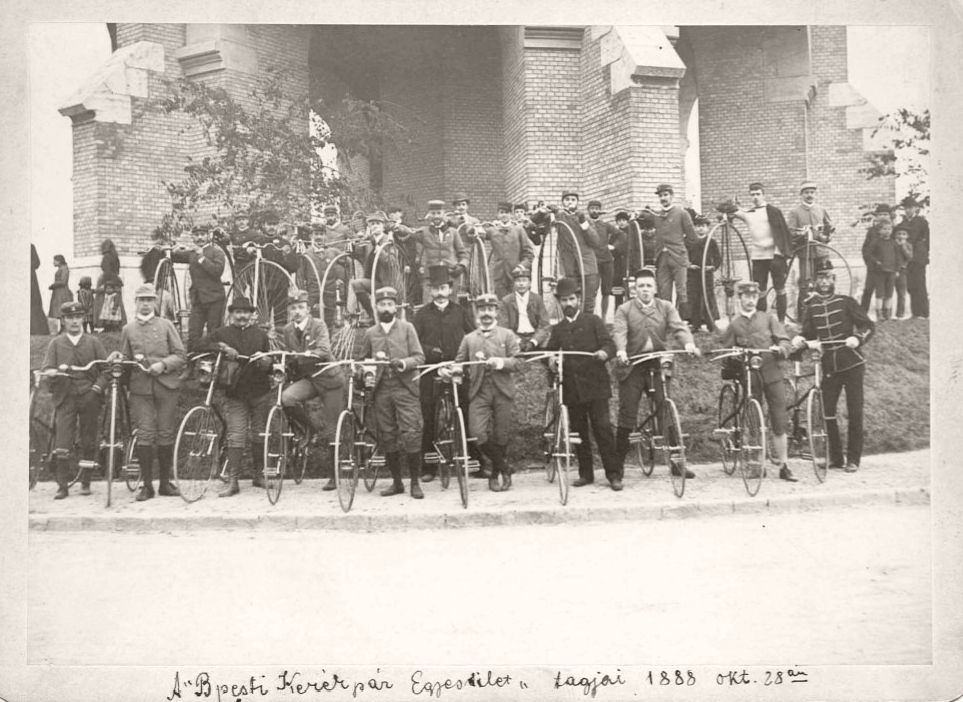
Members of the Budapest Bicycle Association in 1888, the association was founded by László Kosztovits in 1882
At that time, cyclists already had an “official bulletin”, the publisher of the publication Kerékpár-Sport was at 68 Teréz Boulevard. At the Somossy cabaret on Nagymező Street, in the evening, ten ladies performed an “eccentric march” in costume titled For the cyclist.
As interest in the new sport grew, so did the problems. The first was the name, the foreign-sounding word bicikli (bicycle). The cyclists gathered in the Szikszay restaurant in August 1881 to choose an appropriate Hungarian word. Of the two recommended words, vasparipa and kerékpár, more members voted for the latter, so it became the official name and was added to the dictionary of the Hungarian Academy of Sciences in 1883.
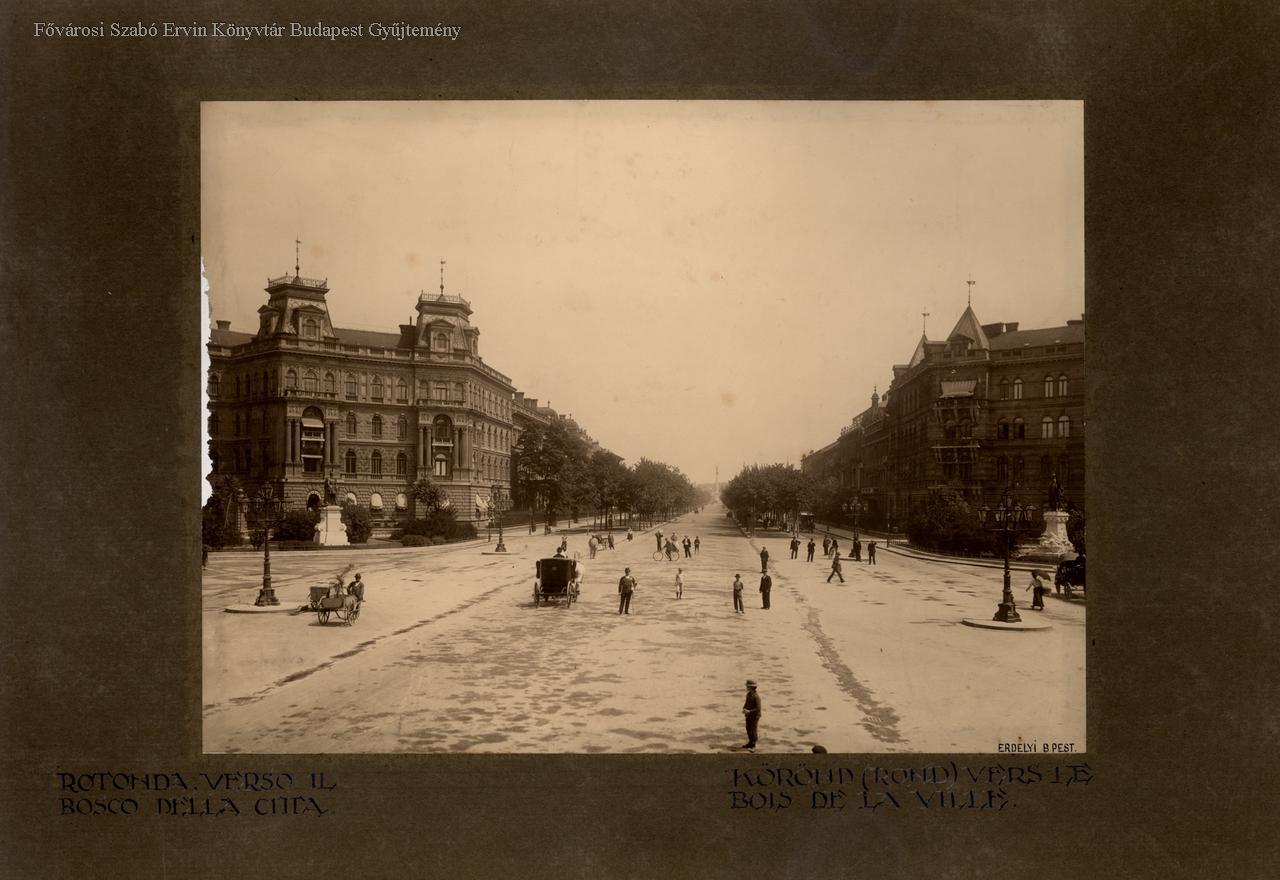
Cycling associations often organized competitions in Városliget and Körönd (Source: FSZEK Budapest Collection)
The other problem was that the Police Chief of Budapest, Elek Thaisz – following the practice in Vienna and Prague – banned cycling in the capital. As the president of the Budapest Cycling Association, László Kosztovits prepared guidelines on urban cycling and, after many months of exploring and involving an English partner association, achieved that on 9 February 1883, the capital's police force regulated cycling in the capital.
These stated, among other things, that the bicycle should be equipped with a bell and a lamp; cycling on sidewalks and footpaths is prohibited; and in the more popular hiking areas in the City Park and on the outskirts, one should only cycle at a moderate speed. The ordinance also stated that during funerals, religious and other ceremonial processions, cycling through the order of the procession is prohibited.
The last decades of the 19th century were the heyday of cycling in Budapest, the modern, lower-wheeled vehicles appeared. Various associations were formed in the capital. The Hungarian Velocipede Club was established in 1885 and held exercises in the spacious cellar at 27 Andrássy Avenue.
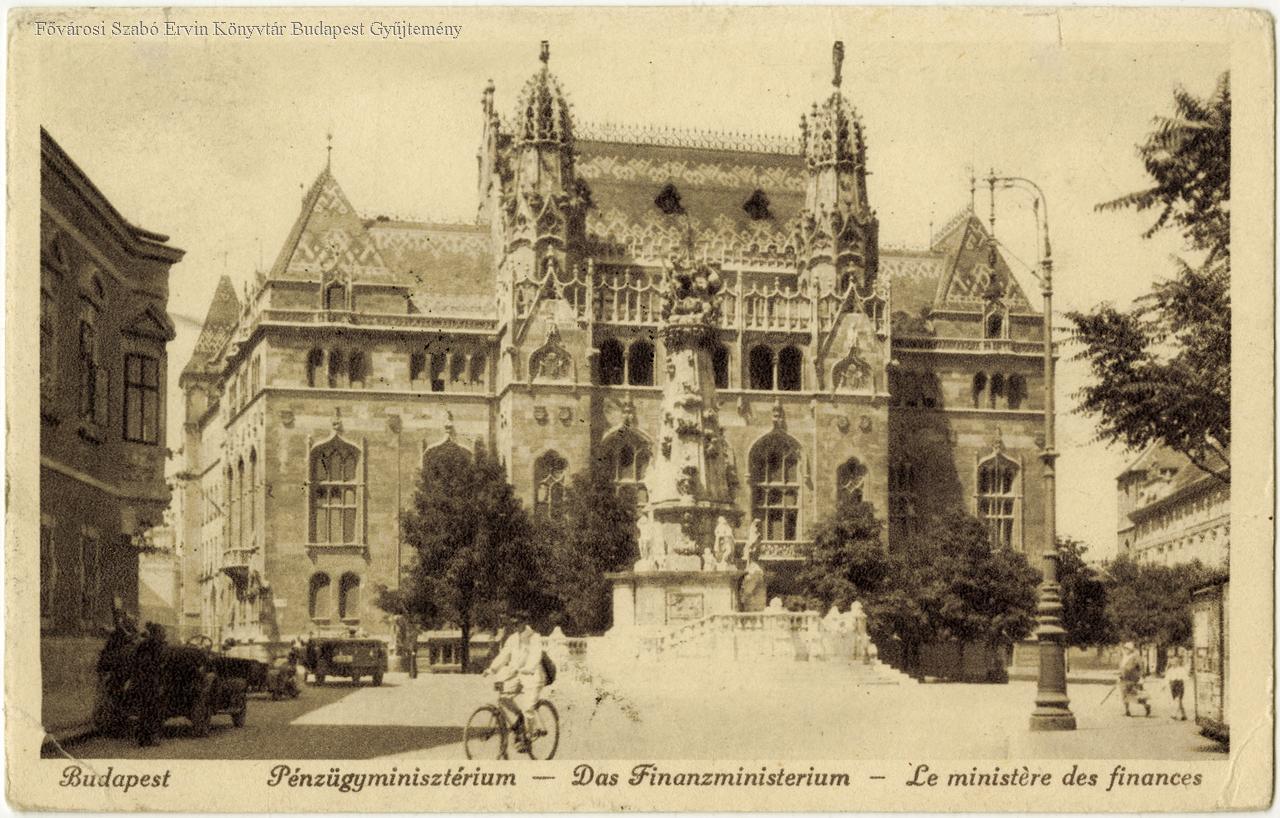
Cyclist in Buda Castle, on Szentháromság Square around 1920 (Source: FSZEK Budapest Collection)
The Újpest Bicycle Association was founded at the beginning of 1893, as was the Buda Bicycle Association. Then in 1894, the Forward Cycling Club, in 1895, the Excelsior High Cycling Association and the Swallow Cycling Association, and a year later, the Condor Cycling Association. The clubs held training events, social trips, and in the summer of 1897, they even organized a joint flower carnival and parade on Andrássy Avenue and in City Park.
Of course, there were also races. Most of the time, the cyclists compared their speed and skill on Hermina Road, or Városligeti Avenue and the Körönd, but the Tattersall, i.e. the trotter, was also a popular track. Betting-based competitions were not uncommon either: a challenger cyclist offered a bet in a newspaper ad stating he would race any horse with saddle or harness from Gödöllő to Budapest.
However, the bicycle was not only a sports or entertainment device. Shop assistants and telegram messengers also used it. Postmen on velocipedes collected letters in the interior of the capital from 1896. It was an innovation of the Minister of Commerce that instead of the small single-horse wagons, the postal servants would collect the letters on three-wheeled velocipedes. There was a box at the front of the machine, in this the collection bag in which the letters were placed. There was even a raincoat for the postmen in the box. Velocipede postmen could also go on streets that cyclists otherwise could not use.
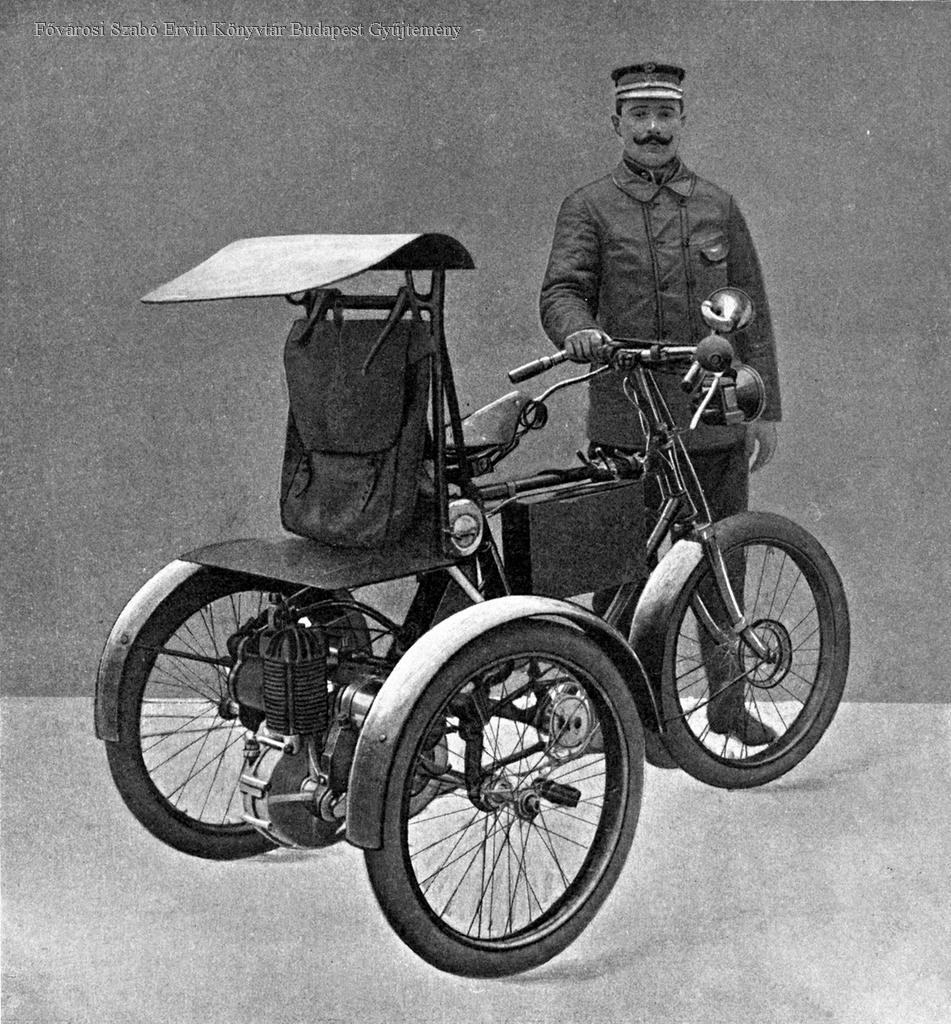
The postal servants rode velocipedes in 1896; after the turn of the century, the tricycle also appeared (Source: FSZEK Budapest Collection)
The bicycle also appeared in the army. The first bicycle training exercise was held in the spring of 1897 in the Maria Theresa barracks on Üllő Street. Soldiers who used their own bicycles for service received a cost of machine damage and repairs from the Department of Defense.
And all over the city, bicycle shops, bicycle rentals, and even sportswear manufacturers were opened. Jenő Forster, for example, advertised his products and himself as a supplier to the Budapest Gymnastics Club and the National Bicycle Association. He made special “women’s dresses” for cycling ladies.
Sports creams were also popular: Kwizda Fluid was recommended for tourists, cyclists and riders to rub in and strengthen their muscles. Bertalan Zubek's arms, hunting, fishing and sporting goods store already offered a bicycle dog alarm; ten pieces were 40 crowns at the turn of the century.
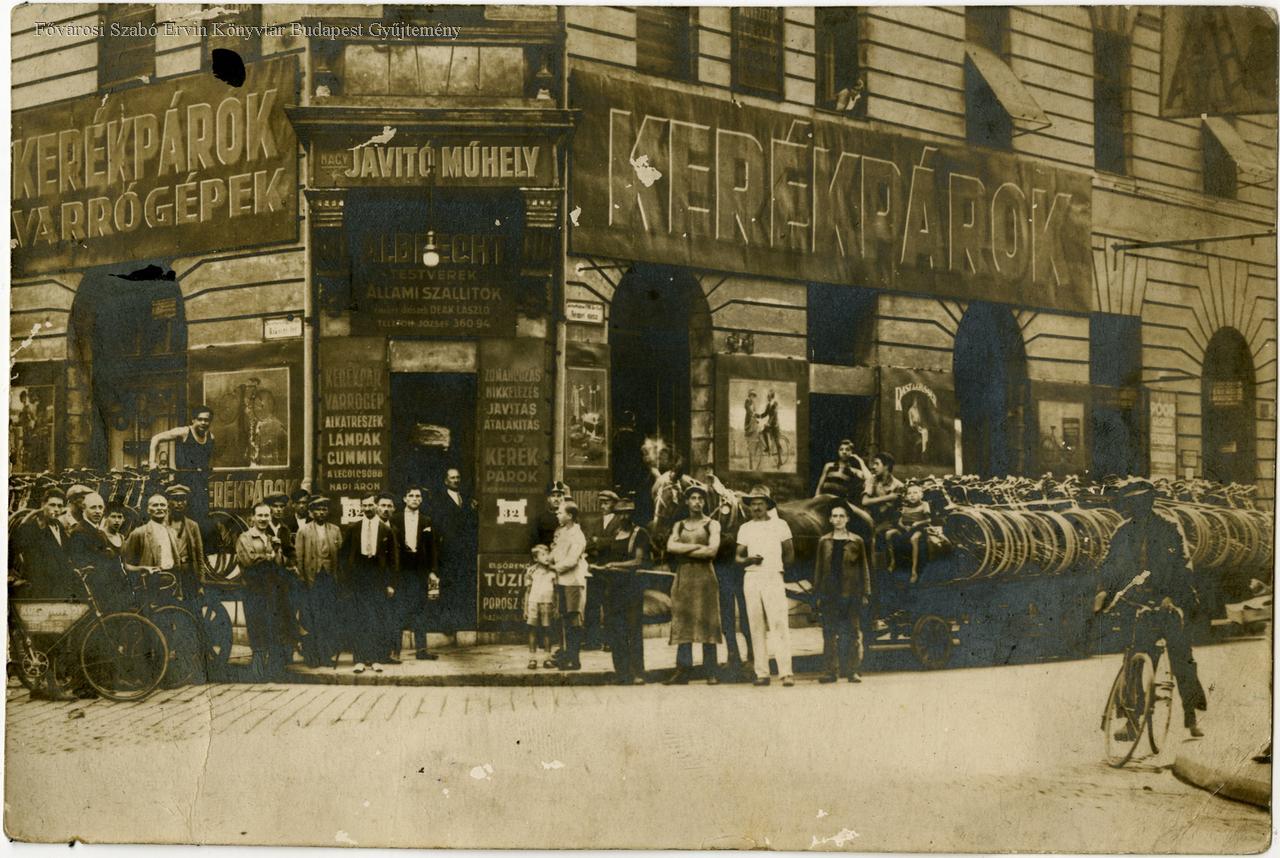
The heyday of small-scale bicycle production in Budapest was between 1931 and 1942. Pictured is the Albrecht brothers' bicycle and sewing machine shop and workshop on the corner of Német Street and Rákóczi Square around 1920-40 (Source: FSZEK Budapest Collection)
As more and more people used the bicycle, racing life also gained new momentum in 1896. The Millenáris was built in Zugló for the millennium year, which many consider being the cradle of Hungarian competitive sports. The first international cycling race was held on 31 May 1896 in the state-of-the-art stadium.
Based on the plans of Alfréd Hajós and Aladár Mattyók, it was transformed into a world-class cycling facility in the late 1920s. It has since been called the Millenáris Velodrome, the most modern and fastest cycle path in contemporary Europe. The 1928 World Cycling Championships were held on the 415-meter-long tilted circuit. In the new arena, motor-driven races and other track races that complied with the competition rules at the time could also be held.
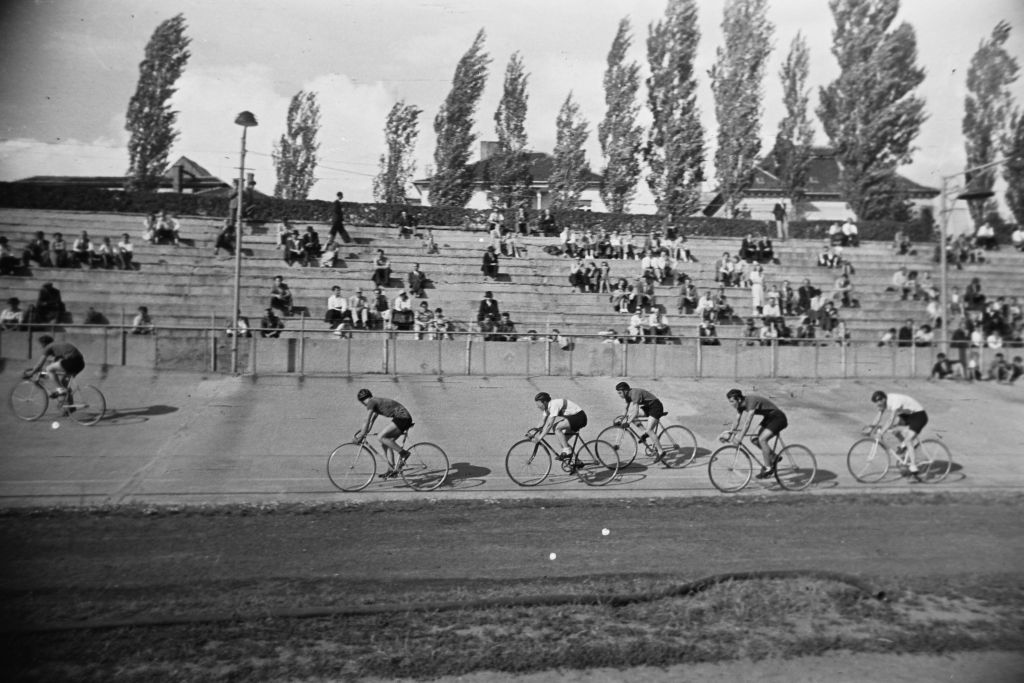
Cycling circuit at the Millennium Velodrome in 1949 (Source: Fortepan / No.: 33240)
Another Velodrome is also connected to the millennium. The Winter and Summer Cycling School Company of Béla Fényi moved into the former exhibition building at the corner of today's Városligeti Avenue and Dózsa György Road. Cyclists cycled in the velodrome to military music.
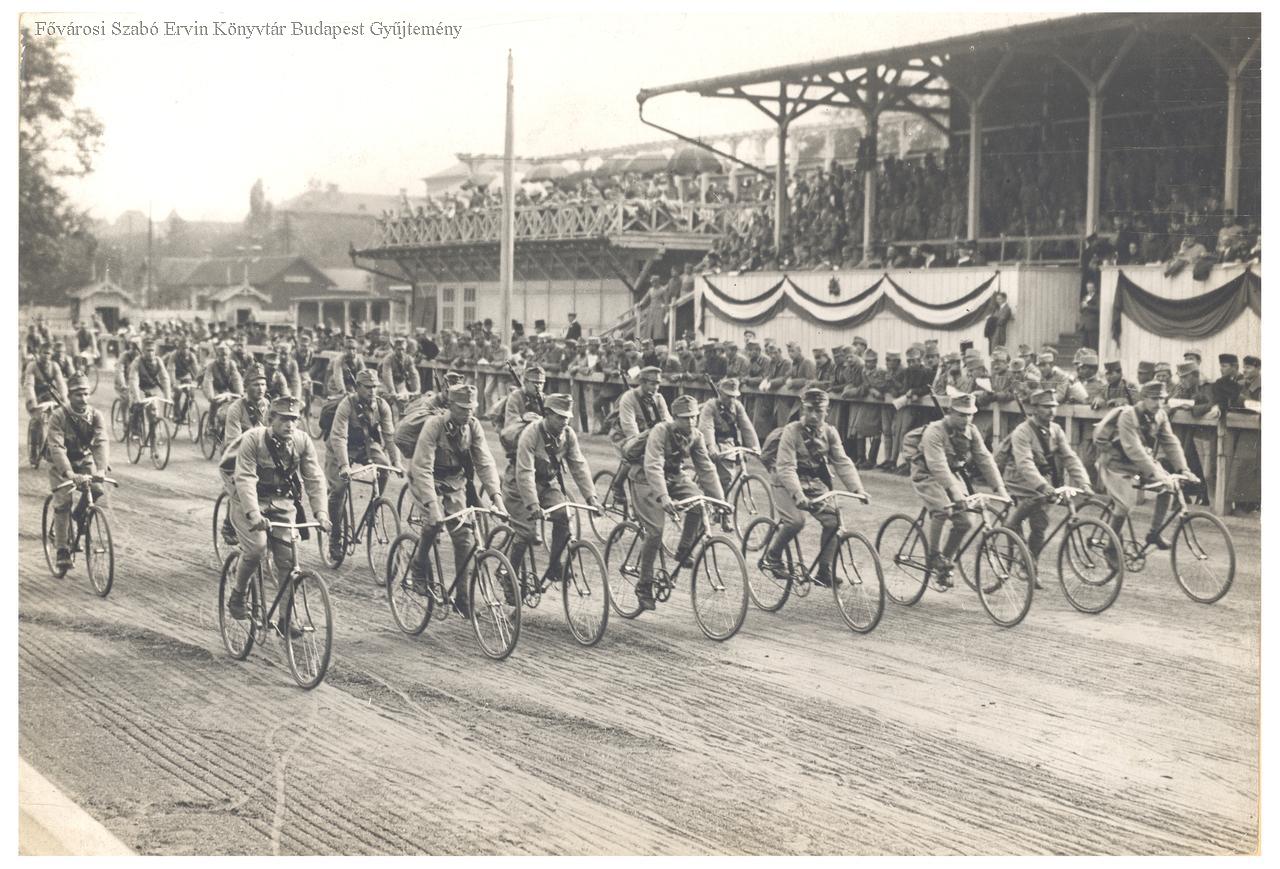
The bicycle was also used in the army from 1897. Pictured is the Budapest Volunteer Cyclist Regiment in 1915 (Source: FSZEK Budapest Collection)
After the turn of the century, urban cycling retained its popularity despite being taxed by the capital. In 1898, five and a year later, 10-crown bicycle taxes had to be paid. In return for the payment, the owner received a number plate of a different colour each year, which he had to place on the bicycle. Finally, in 1911, the obligation to pay was abolished.
Domestic bicycle manufacturers cannot be excluded from the history of cycling in Budapest. The heyday of small-scale production was between 1931 and 1942, and unique bicycles were made in several workshops in Budapest. In the Manfréd Weiss factory in Csepel, large-scale production started.
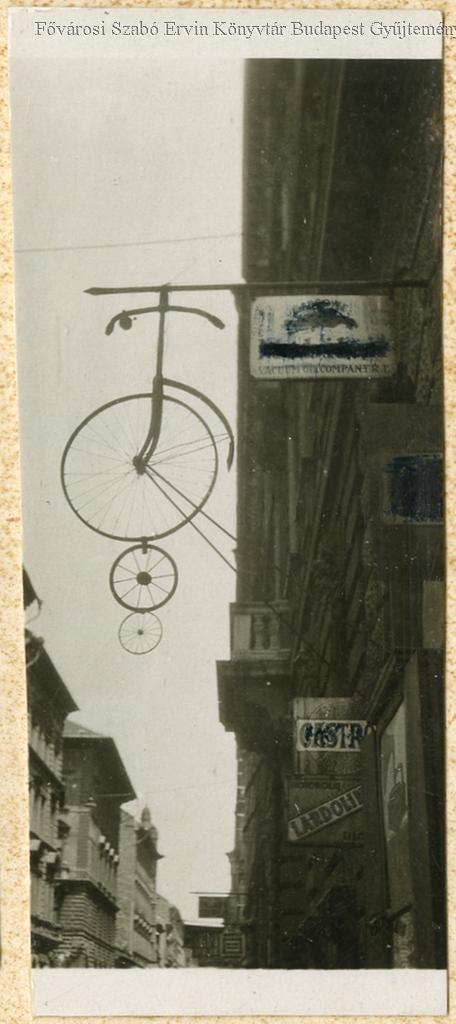
The sign of a Budapest bicycle repairer in 1933 (Source: FSZEK Budapest Collection)
Cover photo: Velocipedists around 1890, photo by Illés Ellinger (Source: FSZEK Budapest Collection)

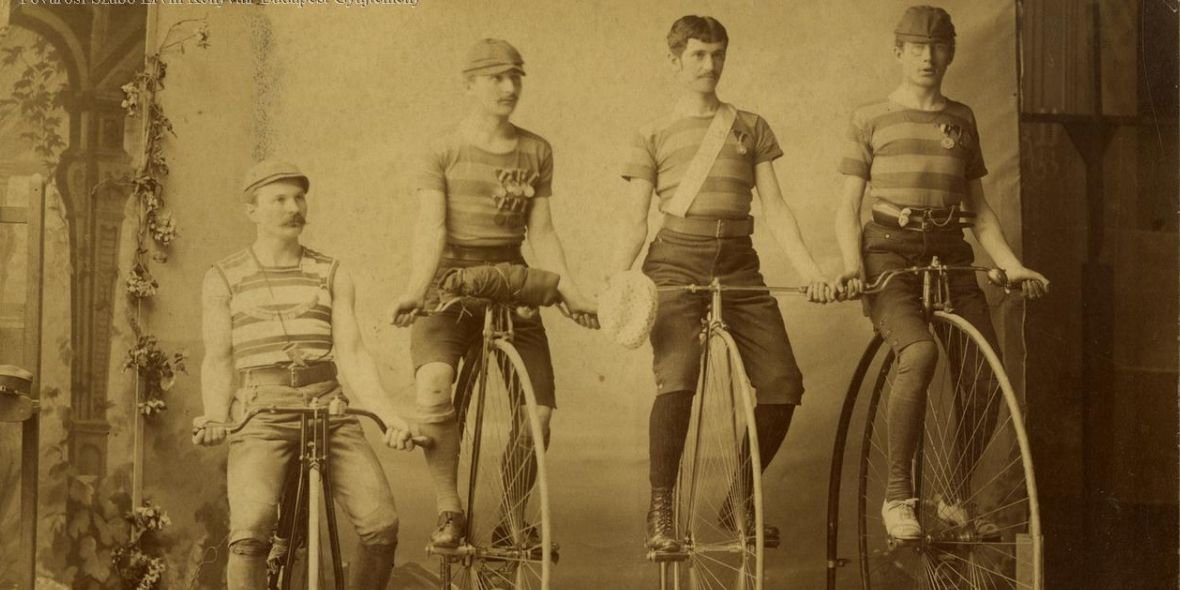



































Hozzászólások
Log in or register to comment!
Login Registration